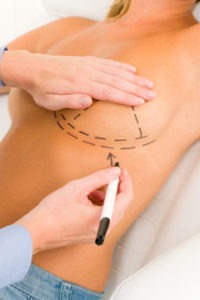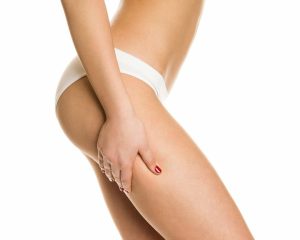 Are you a mom looking to regain your pre-baby body? If so, you may have heard of the term “mommy makeover.” This popular procedure combines multiple plastic surgery treatments to address the physical changes that occur after pregnancy and childbirth. In this comprehensive guide, we will explore the basics of mommy makeovers, the art of combining procedures for optimal results, the benefits of a comprehensive approach, how to prepare for your mommy makeover, and the importance of recovery and aftercare in maximizing your results. Board-certified plastic surgeon Dr. Matthias Solomon provides mommy makeover to patients in Dallas, Frisco, Sherman, Texas, and surrounding locations.
Are you a mom looking to regain your pre-baby body? If so, you may have heard of the term “mommy makeover.” This popular procedure combines multiple plastic surgery treatments to address the physical changes that occur after pregnancy and childbirth. In this comprehensive guide, we will explore the basics of mommy makeovers, the art of combining procedures for optimal results, the benefits of a comprehensive approach, how to prepare for your mommy makeover, and the importance of recovery and aftercare in maximizing your results. Board-certified plastic surgeon Dr. Matthias Solomon provides mommy makeover to patients in Dallas, Frisco, Sherman, Texas, and surrounding locations.
Understanding the Mommy Makeover Basics
A mommy makeover is a customized, multifaceted plastic surgery approach aimed at revitalizing the physical appearance of women post-pregnancy. This tailored suite of surgeries typically encompasses a tummy tuck to tighten and reshape the abdominal area, breast procedures (augmentation, lift, or both) to restore volume and lift to the breasts, and liposuction to eliminate persistent fat deposits that diet and exercise alone cannot address. Each of these procedures targets specific concerns associated with the aftermath of childbearing and nursing, effectively addressing the loosened skin, volume loss, and fat accumulation that many mothers experience.
At its core, the mommy makeover is about synergy; the combined effect of the selected procedures offers a more comprehensive transformation than any single treatment could achieve on its own. It’s a strategic response to the complex array of changes that occur during pregnancy and childbirth, meticulously planned to restore the body’s contours and firmness. By addressing several areas of concern in one operative session, the mommy makeover is uniquely positioned to reinstate a more youthful and toned appearance, reflecting the individual’s pre-pregnancy figure more closely.
The flexibility of the mommy makeover allows for customization to fit each woman’s specific desires and anatomical needs. While the tummy tuck, breast enhancements, and liposuction constitute the core components, additional procedures like a Brazilian butt lift or labiaplasty can be incorporated for a more extensive rejuvenation. This holistic approach ensures that every aspect of the body affected by motherhood can be refined and revitalized, aligning the physical self more closely with the individual’s personal aesthetic goals and enhancing overall self-confidence.
The Art of Combining Procedures for Optimal Results
At the heart of the mommy makeover’s transformative power is the strategic combination of surgical procedures tailored to the individual’s unique body and aesthetic goals. This holistic approach, much like an artist selecting the perfect palette to create a masterpiece, allows plastic surgeons to meticulously plan and execute a blend of treatments that harmonize together to achieve the most flattering, natural-looking results. It’s not just about addressing separate concerns; it’s about understanding how these concerns interplay and how improving one area can enhance the appearance of another.
For instance, when a tummy tuck is performed in conjunction with breast augmentation or lift, the result is not merely a flatter abdomen and fuller breasts. The procedures synergize to create a more proportionate and balanced figure, accentuating the waistline and restoring an overall sense of symmetry and proportion that often gets lost after pregnancy and breastfeeding. Similarly, incorporating liposuction into the makeover can further refine and sculpt the body’s contours, eliminating stubborn fat deposits that neither diet nor exercise can resolve, and enhancing the sculptural effect of the other procedures.
This multi-procedural strategy extends beyond cosmetic benefits. By consolidating recovery times into a single period, it allows individuals to navigate the healing process more efficiently and with less overall downtime than if the procedures were done separately. This thoughtful integration of surgeries minimizes the impact on the patient’s lifestyle and responsibilities, offering a more convenient path to reclaiming their body and confidence.
Planning a mommy makeover is a collaborative process. Surgeons work closely with their patients, leveraging their expertise to recommend the most effective combination of procedures. This partnership is crucial in crafting a bespoke surgical plan that not only meets but exceeds expectations, ensuring each individual’s journey towards rejuvenation is as smooth and rewarding as possible.
The Benefits of a Comprehensive Approach
Opting for a comprehensive mommy makeover transcends the mere aesthetic enhancement of individual body parts. It embodies a holistic strategy aimed at revitalizing the entirety of a woman’s post-pregnancy physique, offering benefits that go beyond what isolated procedures could achieve. This integrated approach fosters a transformative journey that is both efficient and profoundly impactful.
A significant advantage of this all-encompassing method is the harmonization of recovery periods. By consolidating multiple surgeries into one operation, the process streamlines the healing timeline. Patients benefit from a single recovery phase, rather than enduring separate recoveries for each procedure. This unified recovery is not only more manageable but also significantly reduces the total downtime required. As a result, individuals can resume their personal and professional lives more swiftly, embracing their renewed self-confidence without extensive interruption to their daily routines.
Furthermore, the comprehensive approach to a mommy makeover enhances overall satisfaction by achieving a more balanced and cohesive appearance. When procedures are performed in tandem, surgeons can ensure that the enhanced areas complement each other, leading to more symmetrical and proportional results. This careful consideration of how each procedure affects the overall body contour allows for a more refined and natural-looking outcome, reflecting the patient’s aesthetic aspirations more accurately.
Another benefit of this approach lies in its cost-effectiveness. Undergoing multiple procedures at once can be more economical than having them performed separately, due to the consolidation of surgical fees, anesthesia costs, and facility expenses. This financial efficiency, coupled with the physical and emotional advantages, makes the comprehensive mommy makeover an appealing option for many women seeking to reclaim their pre-pregnancy body.
By embracing a comprehensive approach, the mommy makeover offers a pathway to comprehensive rejuvenation, blending efficiency, aesthetic harmony, and cost-effectiveness into a singular transformative experience.
Preparing for Your Mommy Makeover
Embarking on the journey of a mommy makeover requires thoughtful preparation to ensure the best possible outcomes. The initial step in this transformative process is selecting a qualified, board-certified plastic surgeon with a robust portfolio of mommy makeover procedures. This professional will become your guide, offering expert insights and crafting a bespoke treatment plan tailored to your unique body and aesthetic aspirations.
A comprehensive consultation is pivotal for aligning your goals with the potential outcomes of the surgery. During this meeting, be prepared to discuss your medical history, lifestyle, and any previous surgeries. Transparency about your health and expectations is essential for formulating a safe and effective surgical strategy. Your surgeon may also advise on lifestyle adjustments or pre-surgical tests to optimize your readiness for the procedures.
Understanding the scope and sequence of the procedures involved in a mommy makeover is crucial. Familiarize yourself with the recovery timelines, potential risks, and the expected trajectory of your transformation. This knowledge will empower you to make informed decisions and set realistic expectations about the results.
Physical preparation also plays a significant role in your readiness for surgery. Achieving and maintaining a stable weight, adopting a nutritious diet, and abstaining from smoking are advisable measures to enhance your body’s ability to heal and adapt post-surgery. These steps can contribute significantly to a smoother recovery and more enduring results.
Lastly, planning for the recovery phase is an integral part of your preparation. Arrange for assistance with daily tasks and childcare, as your mobility and energy levels will be limited initially. Creating a comfortable recovery space at home, equipped with essential supplies and comforts, will allow you to focus on healing and recuperation.
By meticulously preparing for your mommy makeover, you pave the way for a successful surgery and a more confident, rejuvenated self.
Recovery and Aftercare: Maximizing Your Results
The period following your mommy makeover is critical for ensuring optimal outcomes and the longevity of your transformation. Adherence to the post-operative care plan provided by your plastic surgeon is paramount. This tailored regimen might include directives such as resting adequately, managing discomfort with prescribed medications, and engaging in light activities to promote circulation, depending on your specific procedures and individual healing process.
A key component of your recovery will involve the use of compression garments. These are designed to support the treated areas, reduce swelling, and facilitate the body’s natural healing process. It’s crucial to wear these as instructed, as they play a significant role in shaping your final results.
Equally important is the avoidance of any activities that could strain your healing body. This includes heavy lifting, vigorous exercise, and any other actions that might compromise your recovery or results. Your surgeon will guide you on when it’s safe to gradually resume normal activities, ensuring that your body is adequately healed to handle the physical stress.
Regular follow-up appointments with your surgeon are an essential part of the aftercare process. These visits allow your surgeon to monitor your healing, address any concerns, and provide advice tailored to your recovery stage. It’s also an opportunity for you to ask questions and get professional input on your progress.
Lastly, embracing a healthy lifestyle through balanced nutrition and regular physical activity is crucial for maintaining your makeover results. A commitment to a well-rounded diet and an active routine not only supports your recovery but also contributes to the long-term success of your transformation.
Schedule a Consultation with Frisco, Texas Plastic Surgeon Dr. Solomon
For more information on Plastic Surgery and Non-Surgical Medical Spa Procedures and Treatments in Frisco, Texas, please contact the offices of Board Certified Plastic Surgeon Dr. Matthias Solomon by clicking here or calling 214-983-0213.
Serving patients in Frisco, Dallas, McKinney, Plano, Sherman, Highland park, University Park, Preston Hollow, Prosper, Allen, Southlake, Denton, Irving, Flower mound, Little Elm, Fort Worth, Texas and surrounding areas.

 If you are considering
If you are considering  The decision to get a
The decision to get a  It’s no secret that feeling confident and comfortable in your body can have a profound impact on your overall happiness and self-esteem. One way that many people choose to enhance their physical appearance is through breast augmentation. But did you know that there are actually a couple of different options when it comes to this popular cosmetic procedure? You might be more familiar with the traditional method of using implants, but there’s also a newer technique called fat transfer that’s worth considering. Let’s delve into these two options and weigh their pros and cons to help you make the best decision for your body. Board-certified plastic surgeon
It’s no secret that feeling confident and comfortable in your body can have a profound impact on your overall happiness and self-esteem. One way that many people choose to enhance their physical appearance is through breast augmentation. But did you know that there are actually a couple of different options when it comes to this popular cosmetic procedure? You might be more familiar with the traditional method of using implants, but there’s also a newer technique called fat transfer that’s worth considering. Let’s delve into these two options and weigh their pros and cons to help you make the best decision for your body. Board-certified plastic surgeon Are you considering a
Are you considering a Choosing to get breast implants is a major decision that requires careful consideration. One important aspect to think about is the placement of the implants, as it can significantly impact the final results. There are two main techniques for breast implant placement: over the muscle and under the muscle. While both methods have their own benefits, it’s crucial to understand the differences between the two in order to make the right decision for your body and desired outcome. In this blog post, we will delve into the key factors to consider when deciding between over muscle and under muscle breast implants, so you can feel confident and informed in your decision. Board-certified plastic surgeon
Choosing to get breast implants is a major decision that requires careful consideration. One important aspect to think about is the placement of the implants, as it can significantly impact the final results. There are two main techniques for breast implant placement: over the muscle and under the muscle. While both methods have their own benefits, it’s crucial to understand the differences between the two in order to make the right decision for your body and desired outcome. In this blog post, we will delve into the key factors to consider when deciding between over muscle and under muscle breast implants, so you can feel confident and informed in your decision. Board-certified plastic surgeon
 When considering
When considering 




